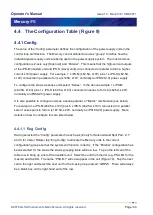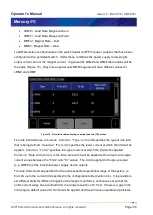
Operator's Manual
Issue 14
/
Mar 2016 / UMC0071
Mercury
iPS
©2016 Oxford Instruments NanoScience. All rights reserved.
Page
40
4 HOW TO CONFIGURE THE IPS FOR YOUR
MAGNET
The superconducting magnet will consist of a solenoid or set of coils. Across (in parallel with)
the coils will be a protection circuit consisting of high-power, low-value resistors and high-power
diodes. Also, typically, across the coil set will be a superconducting link co-constructed with a
separately wired heater which acts as a superconducting “switch”. The impedance of the switch
in its superconducting state will be very much less than the magnet, and in its resistive state
very much greater than the magnet. The switch will also have its own protection circuit.
Figure 7. Diagram showing a simple solenoid magnet fitted with a persistence switch. In this example the persistence
switch heater is ON, the switch is “open” and the current from the psu flows through the magnet.
When the switch heater is ON the superconducting link across the magnet is in its ‘normal’
resistive state so any current supplied from the magnet psu will flow through the lower
impedance path of the magnet. The basic configuration is shown in Figure 7 (protection circuits
not shown). The stability of the ramped current is dependent upon the self-inductance of the
solenoid (or set of coils), the lead resistance of the current leads, the output filter of the power
supply and the control loop parameters set in the power supply.
When the switch heater is OFF the superconducting link across the magnet is in its
‘superconducting’ state so any current supplied from the magnet psu will flow through the lower
impedance path of the superconducting switch and not through the magnet. The switch is
















































